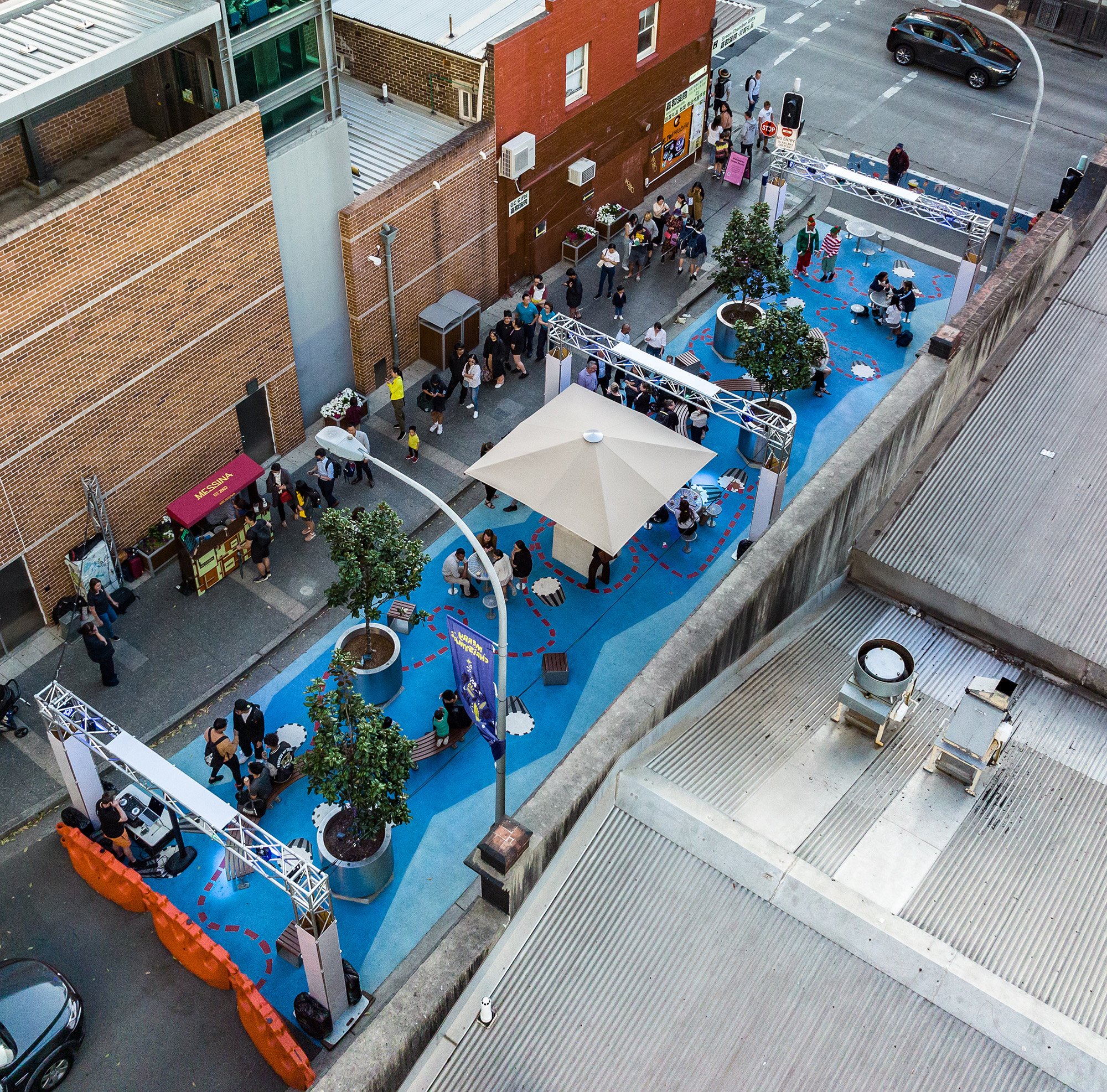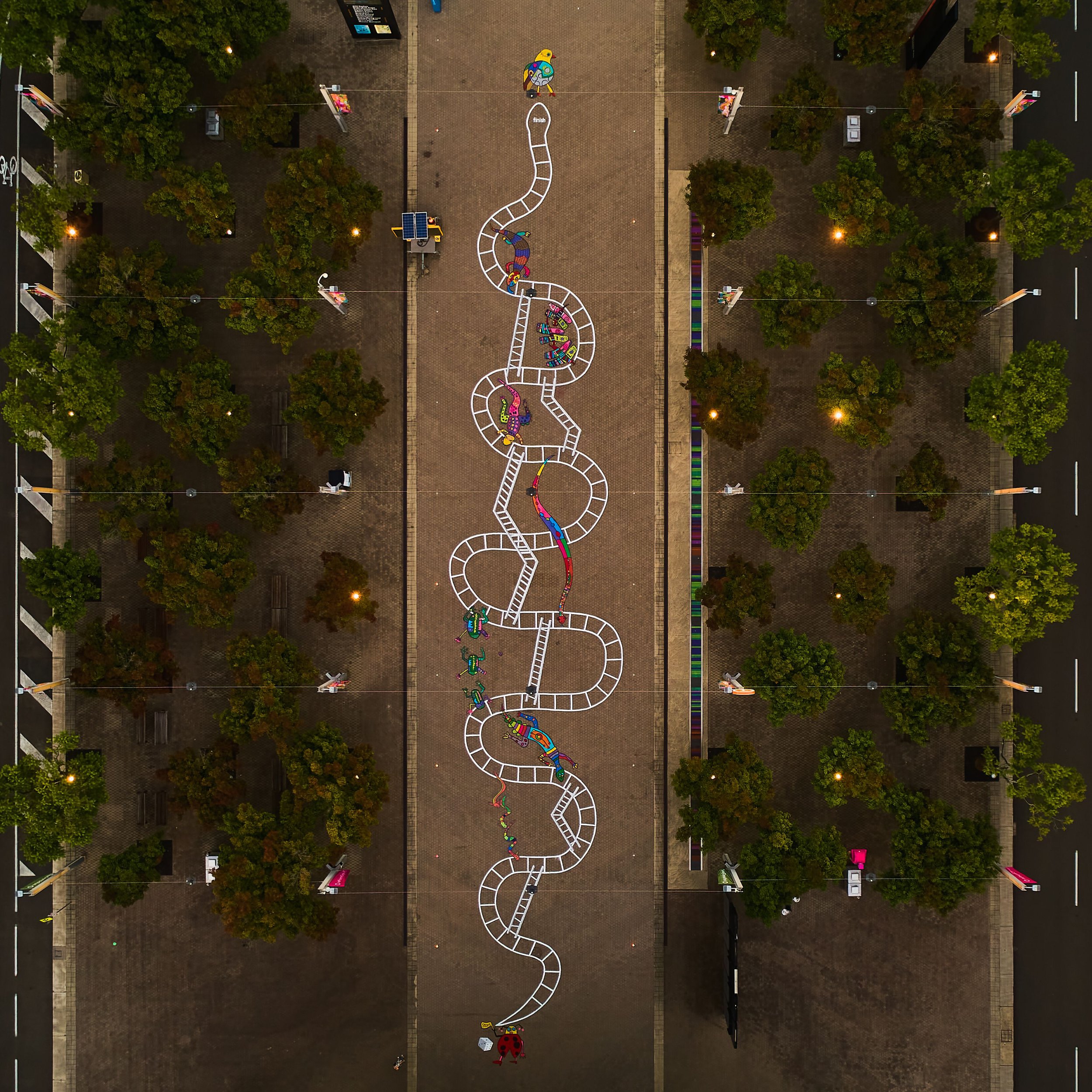Non-Traditional Research Outputs
See here for examples of research-based permanent playable sculpture projects developed by Dr Sanné Mestrom and team.
In the context of urban planning and public space design, 'playable sculpture' has emerged as a distinct typology that transcends traditional categorisations of both public art and play infrastructure. This new classification, established through theoretical and applied research, represents a paradigm shift in how we conceptualise multifunctional public space elements.
Unlike conventional playground equipment or ‘decorative’ public sculptures, playable sculptures function as hybrid interventions that simultaneously serve artistic, recreational, and social purposes within the urban fabric.
The research contribution:
Through theoretical investigation and practical implementation, our research has established 'playable sculpture' as a unique classification within public space design taxonomy. This new typology is characterised by its ability to:
Merge aesthetic and functional considerations in public space planning
Create intergenerational gathering spaces that promote social interaction
Challenge traditional distinctions between art object and play equipment
Introduce new methodologies for designing inclusive public spaces
This classification has implications for how cities approach the integration of art, play, and social space in urban planning strategies.
COLUMNS DES BURWOOD
Commissioned by Burwood Council as part of the Streets as Shared Spaces program, this artwork by Nadia Odlum invites audiences to play, move, and navigate their way through an urban street.
Columns des Burwood artwork draws inspiration from renowned French contemporary artist Daniel Buren’s ‘Le Deux Plateux’ (1986). Colloquially referred to as ‘Colonnes des Buren’, the work consists of 260 marble columns laid out in a perfect grid at different heights, which encourages physical interaction between artwork and audience.
Nadia Odlum’s playful homage echoes Buren’s ideas around spatial awareness and perception, but with new joyous energy that reflects the vibrancy of Burwood.
For more information, click here.
ROLL
Roll is a reconfigurable, interactive artwork created by Nadia Odlum. Featuring colourful recycled pipes and plastic balls, Roll can be constructed anywhere there is a grassy hill. Audiences are invited to harness gravity and creativity to play together in public space.
This artwork was first presented in Sydney Olympic Park, in Western Sydney. Since then it has travelled to HOTA (Home of the Arts) on the Gold Coast in Queensland, where it delighted audiences in the expansive grassy grounds. In June 2022 Roll was installed at Boronia Grove in Epping, for the project ‘Stepping through Epping’, commissioned by the City of Parramatta Council.
In it’s first iteration Roll was assembled by Odlum. In each subsequent iteration it is constructed through play by other artists, in response to an open instruction set.
For more information on this project, including a ‘making of’ video, click here.
SNAKES AND LADDERS
Snakes and Ladders is a collaborative public art project between Sydney artists Digby Webster and Nadia Odlum. This fifty-metre-long ground plane mural creates an accessible play space in the Western Sydney suburb of Sydney Olympic Park. Inspired by the classic game ‘Snakes and Ladders’ the artwork can be used as a life-size game board. Visitors can access a digital dice via the project signage, as well as accessible elements such as an audio description.
This project was commissioned Sydney Olympic Parks Authority and supported by Accessible Arts.
This artwork was included as a case study in the Journal of Public Space special issue ‘Universally Accessible Public Spaces for All’. To read this article click here.
For more information on this project, including a ‘making of’ video, click here.




